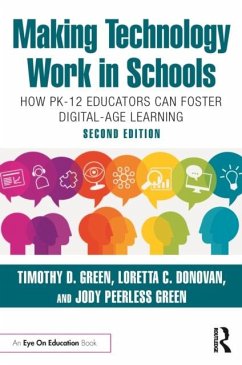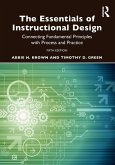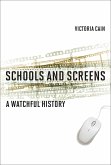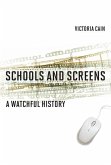Timothy D. Green (California State University, Fullerton, USA), Loretta C. Donovan, Jody Peerless Green
Making Technology Work in Schools
How PK-12 Educators Can Foster Digital-Age Learning
Timothy D. Green (California State University, Fullerton, USA), Loretta C. Donovan, Jody Peerless Green
Making Technology Work in Schools
How PK-12 Educators Can Foster Digital-Age Learning
- Broschiertes Buch
- Merkliste
- Auf die Merkliste
- Bewerten Bewerten
- Teilen
- Produkt teilen
- Produkterinnerung
- Produkterinnerung
Making Technology Work in Schools is an easy-to-use guide for transforming your school into a learner-centered, tech-supportive environment.
Andere Kunden interessierten sich auch für
![Thriving as an Online K-12 Educator Thriving as an Online K-12 Educator]() Thriving as an Online K-12 Educator29,99 €
Thriving as an Online K-12 Educator29,99 €![Elementary Online Learning Elementary Online Learning]() Lana PetersonElementary Online Learning41,99 €
Lana PetersonElementary Online Learning41,99 €![The Essentials of Instructional Design The Essentials of Instructional Design]() Abbie H. BrownThe Essentials of Instructional Design67,99 €
Abbie H. BrownThe Essentials of Instructional Design67,99 €![Teaching Machines Teaching Machines]() Audrey WattersTeaching Machines19,99 €
Audrey WattersTeaching Machines19,99 €![Schools and Screens Schools and Screens]() Victoria CainSchools and Screens19,99 €
Victoria CainSchools and Screens19,99 €![Schools and Screens Schools and Screens]() Victoria CainSchools and Screens22,99 €
Victoria CainSchools and Screens22,99 €![Teaching in the Game-Based Classroom Teaching in the Game-Based Classroom]() Teaching in the Game-Based Classroom40,99 €
Teaching in the Game-Based Classroom40,99 €-
-
-
Making Technology Work in Schools is an easy-to-use guide for transforming your school into a learner-centered, tech-supportive environment.
Produktdetails
- Produktdetails
- Verlag: Taylor & Francis Ltd
- 2 ed
- Seitenzahl: 234
- Erscheinungstermin: 16. Oktober 2024
- Englisch
- Abmessung: 152mm x 229mm x 17mm
- Gewicht: 350g
- ISBN-13: 9781032673493
- ISBN-10: 1032673494
- Artikelnr.: 70601492
- Herstellerkennzeichnung
- Libri GmbH
- Europaallee 1
- 36244 Bad Hersfeld
- gpsr@libri.de
- Verlag: Taylor & Francis Ltd
- 2 ed
- Seitenzahl: 234
- Erscheinungstermin: 16. Oktober 2024
- Englisch
- Abmessung: 152mm x 229mm x 17mm
- Gewicht: 350g
- ISBN-13: 9781032673493
- ISBN-10: 1032673494
- Artikelnr.: 70601492
- Herstellerkennzeichnung
- Libri GmbH
- Europaallee 1
- 36244 Bad Hersfeld
- gpsr@libri.de
Timothy D. Green is a professor of educational technology and teacher education and former director of distance education at California State University, Fullerton, CA, USA. Loretta C. Donovan is a professor of educational technology and codirector of the MS in educational technology at California State University, Fullerton, CA, USA. Jody Peerless Green is a teacher on special assignment (TOSA) as an academic coach focusing on educational technology at La Habra City School District, Orange County, CA, USA.
Part I: The Why of Educational Change and Innovation Adoption 1. Focusing
on the Why 2. The Why of Educational Change and Innovation Adoption 3. A
Primer on Educational Change 4. Talking the Talk of Educational Change 5.
Different Perspectives on Change Part II: The How of Educational Change and
Innovation Adoption: Learners, Technology, and Instructional Practices 6.
An Ecological Perspective on Teaching and Learning 7. Teacher Self-Efficacy
and Collective Teacher Efficacy 8. The iMakers 9. Digital Technology 10.
Instructional Practices Part III: The What of Educational Change and
Innovation Adoption: The PURPOSE Framework 11. An Overview of the PURPOSE
Framework 12. Phase One: Planning 13. Phase Two: Understanding 14. Phase
Three: Researching 15. Phase Four: Preparing 16. Phase Five:
Operationalizing 17. Phase Six: Sustaining 18. Phase Seven: Evaluating
References
on the Why 2. The Why of Educational Change and Innovation Adoption 3. A
Primer on Educational Change 4. Talking the Talk of Educational Change 5.
Different Perspectives on Change Part II: The How of Educational Change and
Innovation Adoption: Learners, Technology, and Instructional Practices 6.
An Ecological Perspective on Teaching and Learning 7. Teacher Self-Efficacy
and Collective Teacher Efficacy 8. The iMakers 9. Digital Technology 10.
Instructional Practices Part III: The What of Educational Change and
Innovation Adoption: The PURPOSE Framework 11. An Overview of the PURPOSE
Framework 12. Phase One: Planning 13. Phase Two: Understanding 14. Phase
Three: Researching 15. Phase Four: Preparing 16. Phase Five:
Operationalizing 17. Phase Six: Sustaining 18. Phase Seven: Evaluating
References
Part I: The Why of Educational Change and Innovation Adoption 1. Focusing
on the Why 2. The Why of Educational Change and Innovation Adoption 3. A
Primer on Educational Change 4. Talking the Talk of Educational Change 5.
Different Perspectives on Change Part II: The How of Educational Change and
Innovation Adoption: Learners, Technology, and Instructional Practices 6.
An Ecological Perspective on Teaching and Learning 7. Teacher Self-Efficacy
and Collective Teacher Efficacy 8. The iMakers 9. Digital Technology 10.
Instructional Practices Part III: The What of Educational Change and
Innovation Adoption: The PURPOSE Framework 11. An Overview of the PURPOSE
Framework 12. Phase One: Planning 13. Phase Two: Understanding 14. Phase
Three: Researching 15. Phase Four: Preparing 16. Phase Five:
Operationalizing 17. Phase Six: Sustaining 18. Phase Seven: Evaluating
References
on the Why 2. The Why of Educational Change and Innovation Adoption 3. A
Primer on Educational Change 4. Talking the Talk of Educational Change 5.
Different Perspectives on Change Part II: The How of Educational Change and
Innovation Adoption: Learners, Technology, and Instructional Practices 6.
An Ecological Perspective on Teaching and Learning 7. Teacher Self-Efficacy
and Collective Teacher Efficacy 8. The iMakers 9. Digital Technology 10.
Instructional Practices Part III: The What of Educational Change and
Innovation Adoption: The PURPOSE Framework 11. An Overview of the PURPOSE
Framework 12. Phase One: Planning 13. Phase Two: Understanding 14. Phase
Three: Researching 15. Phase Four: Preparing 16. Phase Five:
Operationalizing 17. Phase Six: Sustaining 18. Phase Seven: Evaluating
References








